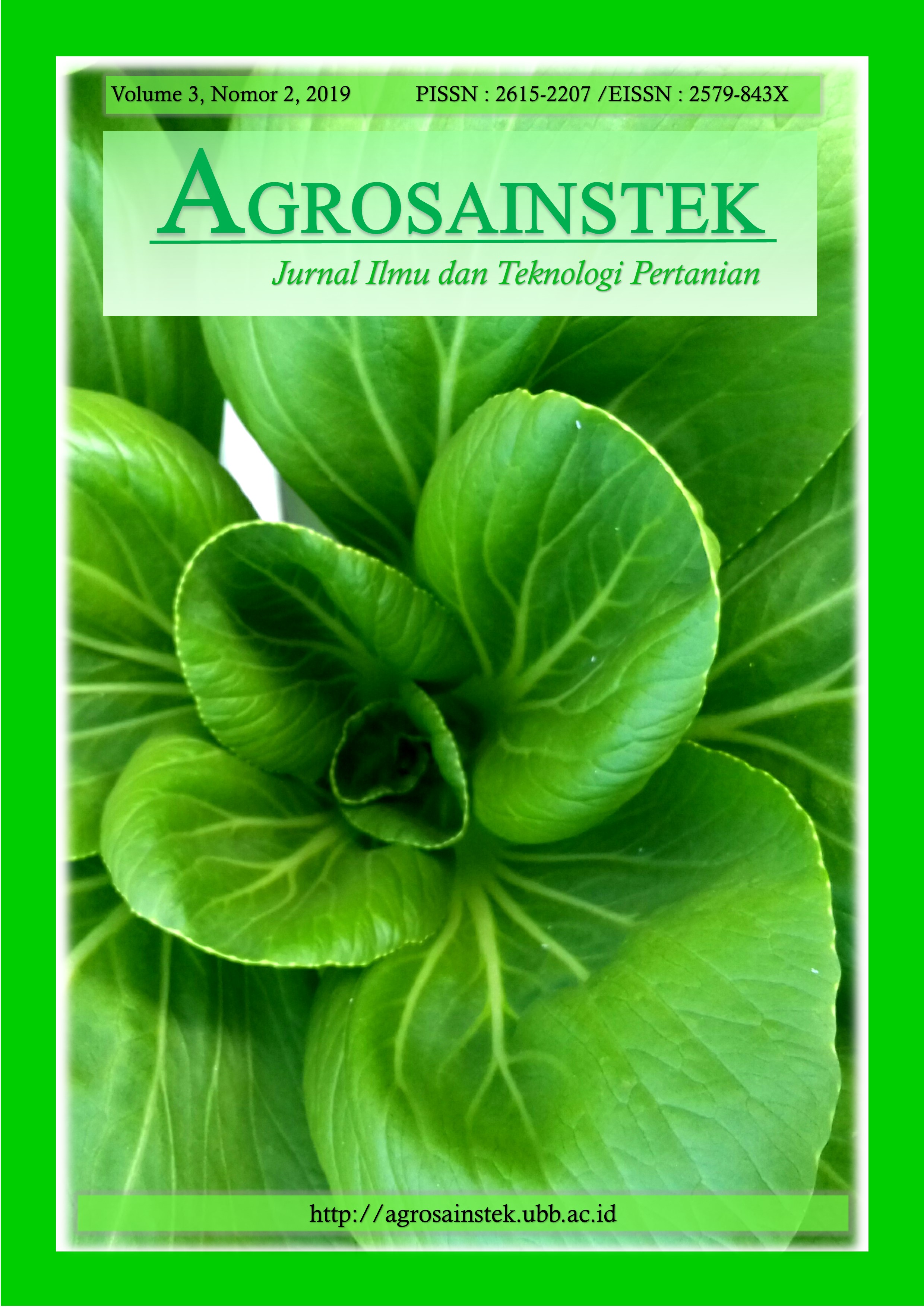The Effects of Fertilizer Treatment, Rhizome Seed Size, and Day of Harvest In Java Turmeric (Curcuma xanthorrhiza Roxb.)
DOI:
https://doi.org/10.33019/agrosainstek.v3i2.49Kata Kunci:
Curcuma xanthorrhiza, Organic fertilizer, RhizomeAbstrak
Java turmeric (Curcuma xanthorrhiza Roxb.) is cultivated as a secondary crop, resulting in variable rhizome quality which can be increased by suitable cultivation methods. This study investigated the effect of different cultivation methods on the rhizome yield of Java turmeric. Different fertilizer treatments(none, organic, inorganic, and semi-organic fertilizer), three groups of rhizome seed size (small (50–80 g), medium (100–150 g), and large (200–250 g)) and three groups of harvesting age (eight, ten, and twelve months after planting) were evaluated in a split plot design experiment. Results show that large rhizome seed size together with organic fertilizer treatment increased secondary rhizome production, yielding the highest number, weight and diameter. As high levels of starch in the primary rhizome are crucial for growth of the plant, the use of large rhizomes for propagation is indicated in Java turmeric cultivation. The highest weight and number of primary rhizomes were yielded when plants were harvested twelve months after planting.






.png)

